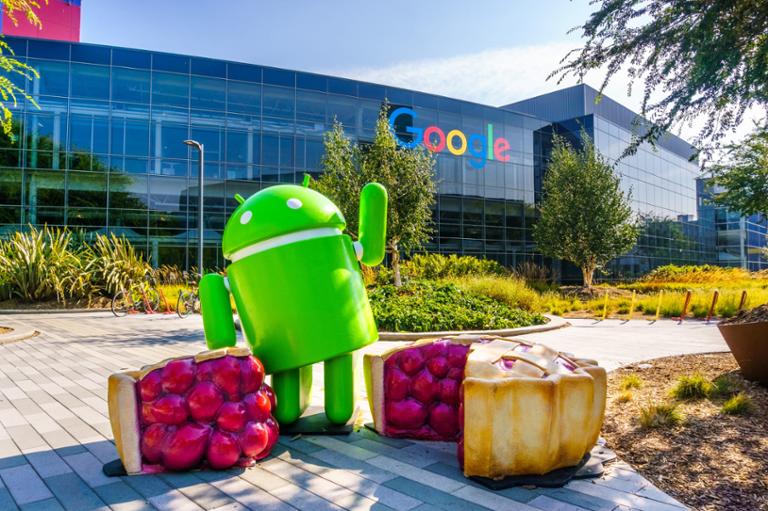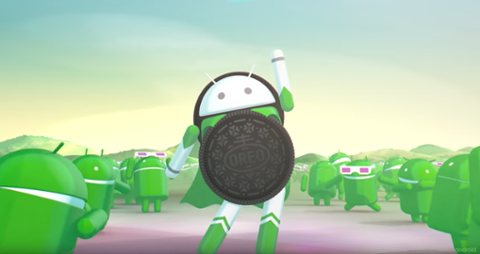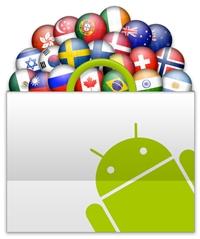 This data suggests a very big problem for Google: Despite periodic attempts to rein in the fragmentation of the Android ecosystem, a sizable percentage of smartphones and tablets continue to run hilariously outdated versions. That’s a problem from both a features and a security perspective, and it impacts developers and tech pros in addition to users. Google’s original effort to “de-fragmentize” the ecosystem was the Android Update Alliance, originally positioned as an “agreement” between manufacturers to support Android devices for up to 18 months after release. That effort, which launched in 2011, quickly failed. Last year, the company announced Project Treble, designed to allow manufacturers to seamlessly update Android; that effort clearly hasn’t taken off yet. By comparison, some 63 percent of iOS devices have installed iOS 12, which was released in mid-September. Another 30 percent run iOS 11, which came out last year. A mere 7 percent of iOS devices run an earlier version. Apple benefits from building both its own hardware and software; Google’s executives must negotiate with the heads of various smartphone manufacturers, who may have their own agendas and schedules for updating mobile software. Android Pie introduces a host of new features, including the ability to granularly adjust notifications, “smart” adjustments to preserve battery life, new gesture controls, and a “Digital Wellbeing” feature that allows users to monitor (and potentially change) how much time they spend with their device. And that’s not all; there’s a bevy of small tweaks designed to make the Android-centric life more efficient and seamless. But the vast majority of Android users apparently won’t get to access this latest and greatest, at least in the short term. That’s frustrating for developers who take the time to optimize their Android apps for Pie, but it’s worse for those folks who buy an Android phone and expect that, at some point, they’ll have access to the latest features. If previous Android adoption behavior is any indication, it might be a year or two (or longer) before even a fifth of the market is on Pie. All this hand-wringing over Android fragmentation could be rendered null if Google proceeds with its long-rumored plans to replace Android with another operating system—possibly Fuchsia, which (theoretically) can scale from smartwatches all the way up to in-car systems. But until that happens, users and tech pros are stuck with Android’s chaotic environment.
This data suggests a very big problem for Google: Despite periodic attempts to rein in the fragmentation of the Android ecosystem, a sizable percentage of smartphones and tablets continue to run hilariously outdated versions. That’s a problem from both a features and a security perspective, and it impacts developers and tech pros in addition to users. Google’s original effort to “de-fragmentize” the ecosystem was the Android Update Alliance, originally positioned as an “agreement” between manufacturers to support Android devices for up to 18 months after release. That effort, which launched in 2011, quickly failed. Last year, the company announced Project Treble, designed to allow manufacturers to seamlessly update Android; that effort clearly hasn’t taken off yet. By comparison, some 63 percent of iOS devices have installed iOS 12, which was released in mid-September. Another 30 percent run iOS 11, which came out last year. A mere 7 percent of iOS devices run an earlier version. Apple benefits from building both its own hardware and software; Google’s executives must negotiate with the heads of various smartphone manufacturers, who may have their own agendas and schedules for updating mobile software. Android Pie introduces a host of new features, including the ability to granularly adjust notifications, “smart” adjustments to preserve battery life, new gesture controls, and a “Digital Wellbeing” feature that allows users to monitor (and potentially change) how much time they spend with their device. And that’s not all; there’s a bevy of small tweaks designed to make the Android-centric life more efficient and seamless. But the vast majority of Android users apparently won’t get to access this latest and greatest, at least in the short term. That’s frustrating for developers who take the time to optimize their Android apps for Pie, but it’s worse for those folks who buy an Android phone and expect that, at some point, they’ll have access to the latest features. If previous Android adoption behavior is any indication, it might be a year or two (or longer) before even a fifth of the market is on Pie. All this hand-wringing over Android fragmentation could be rendered null if Google proceeds with its long-rumored plans to replace Android with another operating system—possibly Fuchsia, which (theoretically) can scale from smartwatches all the way up to in-car systems. But until that happens, users and tech pros are stuck with Android’s chaotic environment. Google's Android Pie Struggling with Adoption Rate
Back in August, Google released Android Pie, the latest version of its mobile operating system. It doesn’t seem to be catching on quite yet, despite a release schedule that has Pie appearing on many Android devices during the fall. Google periodically releases data on the market-share of the various Android versions. Pie hasn’t yet made an appearance on the list, which means it’s present on fewer phones than Gingerbread, the version of Android released in 2010, which has a 0.2 percent share of the Android market. Unlike Apple’s mobile device ecosystem, in which a majority of iPhones and iPads update to the latest version of iOS pretty quickly (driven in large part by Apple’s habit of sending nonstop update notifications), many Android devices continue to run ancient versions of the OS. For example, some 7.6 percent of Android devices are still running KitKat, which was released in 2013. Another 17.9 percent of phones run Android Lollipop, released the year after KitKat, and 21.3 percent run Marshmallow, which Google issued in the wake of Lollipop. And Marshmallow was only just behind Oreo (21.5 percent), released in 2017.  This data suggests a very big problem for Google: Despite periodic attempts to rein in the fragmentation of the Android ecosystem, a sizable percentage of smartphones and tablets continue to run hilariously outdated versions. That’s a problem from both a features and a security perspective, and it impacts developers and tech pros in addition to users. Google’s original effort to “de-fragmentize” the ecosystem was the Android Update Alliance, originally positioned as an “agreement” between manufacturers to support Android devices for up to 18 months after release. That effort, which launched in 2011, quickly failed. Last year, the company announced Project Treble, designed to allow manufacturers to seamlessly update Android; that effort clearly hasn’t taken off yet. By comparison, some 63 percent of iOS devices have installed iOS 12, which was released in mid-September. Another 30 percent run iOS 11, which came out last year. A mere 7 percent of iOS devices run an earlier version. Apple benefits from building both its own hardware and software; Google’s executives must negotiate with the heads of various smartphone manufacturers, who may have their own agendas and schedules for updating mobile software. Android Pie introduces a host of new features, including the ability to granularly adjust notifications, “smart” adjustments to preserve battery life, new gesture controls, and a “Digital Wellbeing” feature that allows users to monitor (and potentially change) how much time they spend with their device. And that’s not all; there’s a bevy of small tweaks designed to make the Android-centric life more efficient and seamless. But the vast majority of Android users apparently won’t get to access this latest and greatest, at least in the short term. That’s frustrating for developers who take the time to optimize their Android apps for Pie, but it’s worse for those folks who buy an Android phone and expect that, at some point, they’ll have access to the latest features. If previous Android adoption behavior is any indication, it might be a year or two (or longer) before even a fifth of the market is on Pie. All this hand-wringing over Android fragmentation could be rendered null if Google proceeds with its long-rumored plans to replace Android with another operating system—possibly Fuchsia, which (theoretically) can scale from smartwatches all the way up to in-car systems. But until that happens, users and tech pros are stuck with Android’s chaotic environment.
This data suggests a very big problem for Google: Despite periodic attempts to rein in the fragmentation of the Android ecosystem, a sizable percentage of smartphones and tablets continue to run hilariously outdated versions. That’s a problem from both a features and a security perspective, and it impacts developers and tech pros in addition to users. Google’s original effort to “de-fragmentize” the ecosystem was the Android Update Alliance, originally positioned as an “agreement” between manufacturers to support Android devices for up to 18 months after release. That effort, which launched in 2011, quickly failed. Last year, the company announced Project Treble, designed to allow manufacturers to seamlessly update Android; that effort clearly hasn’t taken off yet. By comparison, some 63 percent of iOS devices have installed iOS 12, which was released in mid-September. Another 30 percent run iOS 11, which came out last year. A mere 7 percent of iOS devices run an earlier version. Apple benefits from building both its own hardware and software; Google’s executives must negotiate with the heads of various smartphone manufacturers, who may have their own agendas and schedules for updating mobile software. Android Pie introduces a host of new features, including the ability to granularly adjust notifications, “smart” adjustments to preserve battery life, new gesture controls, and a “Digital Wellbeing” feature that allows users to monitor (and potentially change) how much time they spend with their device. And that’s not all; there’s a bevy of small tweaks designed to make the Android-centric life more efficient and seamless. But the vast majority of Android users apparently won’t get to access this latest and greatest, at least in the short term. That’s frustrating for developers who take the time to optimize their Android apps for Pie, but it’s worse for those folks who buy an Android phone and expect that, at some point, they’ll have access to the latest features. If previous Android adoption behavior is any indication, it might be a year or two (or longer) before even a fifth of the market is on Pie. All this hand-wringing over Android fragmentation could be rendered null if Google proceeds with its long-rumored plans to replace Android with another operating system—possibly Fuchsia, which (theoretically) can scale from smartwatches all the way up to in-car systems. But until that happens, users and tech pros are stuck with Android’s chaotic environment.
 This data suggests a very big problem for Google: Despite periodic attempts to rein in the fragmentation of the Android ecosystem, a sizable percentage of smartphones and tablets continue to run hilariously outdated versions. That’s a problem from both a features and a security perspective, and it impacts developers and tech pros in addition to users. Google’s original effort to “de-fragmentize” the ecosystem was the Android Update Alliance, originally positioned as an “agreement” between manufacturers to support Android devices for up to 18 months after release. That effort, which launched in 2011, quickly failed. Last year, the company announced Project Treble, designed to allow manufacturers to seamlessly update Android; that effort clearly hasn’t taken off yet. By comparison, some 63 percent of iOS devices have installed iOS 12, which was released in mid-September. Another 30 percent run iOS 11, which came out last year. A mere 7 percent of iOS devices run an earlier version. Apple benefits from building both its own hardware and software; Google’s executives must negotiate with the heads of various smartphone manufacturers, who may have their own agendas and schedules for updating mobile software. Android Pie introduces a host of new features, including the ability to granularly adjust notifications, “smart” adjustments to preserve battery life, new gesture controls, and a “Digital Wellbeing” feature that allows users to monitor (and potentially change) how much time they spend with their device. And that’s not all; there’s a bevy of small tweaks designed to make the Android-centric life more efficient and seamless. But the vast majority of Android users apparently won’t get to access this latest and greatest, at least in the short term. That’s frustrating for developers who take the time to optimize their Android apps for Pie, but it’s worse for those folks who buy an Android phone and expect that, at some point, they’ll have access to the latest features. If previous Android adoption behavior is any indication, it might be a year or two (or longer) before even a fifth of the market is on Pie. All this hand-wringing over Android fragmentation could be rendered null if Google proceeds with its long-rumored plans to replace Android with another operating system—possibly Fuchsia, which (theoretically) can scale from smartwatches all the way up to in-car systems. But until that happens, users and tech pros are stuck with Android’s chaotic environment.
This data suggests a very big problem for Google: Despite periodic attempts to rein in the fragmentation of the Android ecosystem, a sizable percentage of smartphones and tablets continue to run hilariously outdated versions. That’s a problem from both a features and a security perspective, and it impacts developers and tech pros in addition to users. Google’s original effort to “de-fragmentize” the ecosystem was the Android Update Alliance, originally positioned as an “agreement” between manufacturers to support Android devices for up to 18 months after release. That effort, which launched in 2011, quickly failed. Last year, the company announced Project Treble, designed to allow manufacturers to seamlessly update Android; that effort clearly hasn’t taken off yet. By comparison, some 63 percent of iOS devices have installed iOS 12, which was released in mid-September. Another 30 percent run iOS 11, which came out last year. A mere 7 percent of iOS devices run an earlier version. Apple benefits from building both its own hardware and software; Google’s executives must negotiate with the heads of various smartphone manufacturers, who may have their own agendas and schedules for updating mobile software. Android Pie introduces a host of new features, including the ability to granularly adjust notifications, “smart” adjustments to preserve battery life, new gesture controls, and a “Digital Wellbeing” feature that allows users to monitor (and potentially change) how much time they spend with their device. And that’s not all; there’s a bevy of small tweaks designed to make the Android-centric life more efficient and seamless. But the vast majority of Android users apparently won’t get to access this latest and greatest, at least in the short term. That’s frustrating for developers who take the time to optimize their Android apps for Pie, but it’s worse for those folks who buy an Android phone and expect that, at some point, they’ll have access to the latest features. If previous Android adoption behavior is any indication, it might be a year or two (or longer) before even a fifth of the market is on Pie. All this hand-wringing over Android fragmentation could be rendered null if Google proceeds with its long-rumored plans to replace Android with another operating system—possibly Fuchsia, which (theoretically) can scale from smartwatches all the way up to in-car systems. But until that happens, users and tech pros are stuck with Android’s chaotic environment. 


